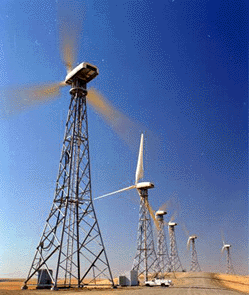Fluid Mechanics |
||
Introduction
Mass Conservation Momentum Conservation
Energy Consevation
Interesting links
|
Fluid Mechanics, physical science
dealing with the action of fluids at rest (fluid statics) or in motion (fluid dynamics),
and their interaction with flow devices and applications in engineering. The subject
branches out into sub-disciplines such as: Aerodynamics - deals with the motion of
air and other gases, and their interactions with bodies in motion such as lift and
drag; Hydraulics - application of fluid mechanics to engineering devices involving liquids such
as flow through pipes, weir and dam design; Geophysical
fluid dynamics- fluid phenomenoa associated with the
dynamics of the atmosphere and the oceans such as hurricane and weather systems, Bio-fluid mechanics- fluid
mechanics involved in biophysical processes such as blood flow in arteries, and many
others.
Wind Energy Power Plant: A Case Study NWTC: National Wind Technology Center
Many Fluid Mechanics issues involved in the design of optimal wind turbines, such as aerodynamics, unsteady aerodynamics, wind characteristics, and many others.
Study Plan (for the first semester) (1) Fluid properties: density, pressure, viscosity, temperature, surface tension, etc. (2) Fluid static: static pressure distribution, Archimeded's principle and buoyancy, forces on submerged objects. (3) Governing equations: mass, momentum and energy conservation equations. (4) Applications: turbines, compressors, pumps, pipe flows, et.
|
